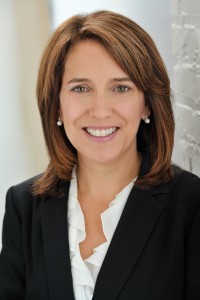 By Jarod Cerf
By Jarod Cerf
As McKinsey’s 2012 report on gender and corporate culture can attest, firms and companies still have the power, means, and capacity to serve as primary advocates for the women they employ. Given the context and theme of “Inspiring Change” for this year’s International Women’s Day, the month of March can serve as an ideal time to increase the volume on conversations about the challenges and opportunities for professional women.
While it is important for companies and their employees to be agents of change every day of the year, many firms take advantage of International Women’s Day to increase awareness, provide data, relate progress, and encourage participation in ongoing efforts to increase the number of women in leadership roles.
Defining Keys to Success and Unlocking Potential
Accenture has released a new study called “Career Capital” in honor of International Women’s Day. The study emphasizes the need for continued proactive training programs and leadership initiatives that focus on how men and women approach their career paths—as well as where the two genders differ on certain values.
The study revealed that men are still more likely to ask for (and negotiate) a raise, while women tend to rate efficiency somewhat higher than men as the skill they bring to the table, whereas men rate their leadership skill higher. Both men and women anticipate a greater number of women CEOs and board members by 2020, with correspondents across the board (74 percent) claiming that experience mattered more than education.
Accenture also hosted a webcast this past Friday with keynote speakers Arianna Huffington and Gayle King, and panelists ranging from Accenture’s Managing Director of Global Inclusion and Diversity, Nellie Borrero, to the Chairman and CEO of BAV Consulting, John Gerzema. The conversation centered on professional insights and how participants can best acquire and build their own career capital.
Community Outreach Builds the Pipeline and Boosts Morale
To celebrate International Women’s Day, SunGard teamed up with Girl Develop It – an international organization providing affordable and accessible programs to women who want to learn software development through mentorship and hands-on instruction – to host screenings of the film, Girl Rising, and raise awareness for access to education for girls across the world.
Suzanne Penavic, Director of Employee Engagement at SunGard, commented on how being aware of issues can really get people thinking and talking.
She noted, “As a technology company we rely on our software developers, who represent 33% of our total workforce and are based in numerous locations around the world. We support recruiting and retaining a diverse talent pool among this group, and within our entire company, because in the end we want the best minds working together in our organization. We invited Girl Develop It to help connect the dots around this notion.”
Penavic added, “Girl Develop It will join SunGard in other locations such as Chicago, Miami and Philadelphia, and in screening locations where they do not have a presence, such as Pune and Tunis.”
Engaging Women in the Workplace
Capco, likewise, continues to evaluate and evolve its mentoring efforts, with Kaylin Kugler, a principal consultant and leader at the company, acting as one of the chief advocates for Women@Capco –an initiative the company launched in 2011.
Kugler said the network consolidates available resources, including Capco’s mentoring circles, and provides current (and incoming) generations of women with a means for reaching out to the leadership, as well as each other, for support.
Read more
 Whether you work as an engineer or a coder, a big data analyst, product manager, or a project manager in technology, you probably want to work for a great company who values both the technology itself and the women who make it happen.
Whether you work as an engineer or a coder, a big data analyst, product manager, or a project manager in technology, you probably want to work for a great company who values both the technology itself and the women who make it happen.
 By Michele Drayton
By Michele Drayton






